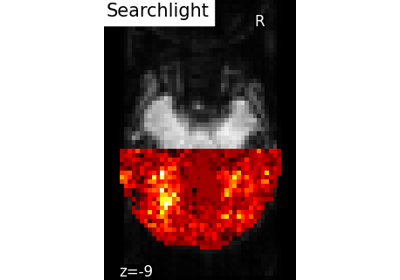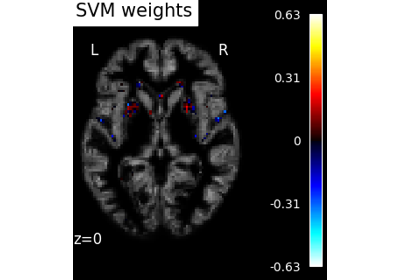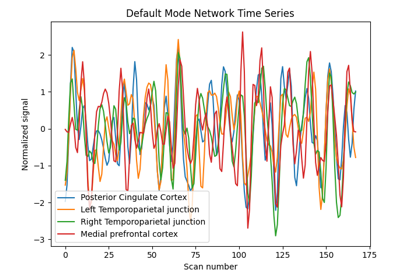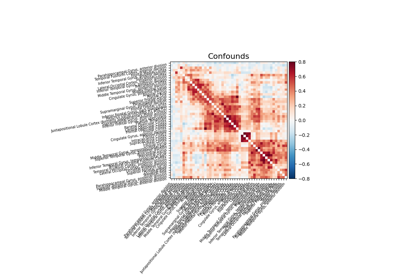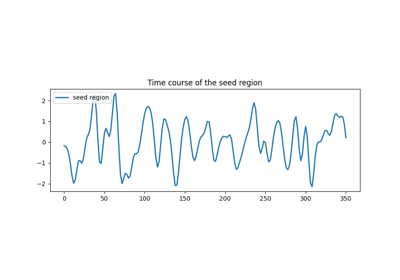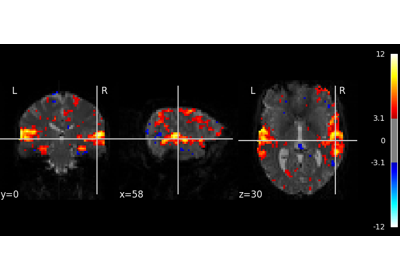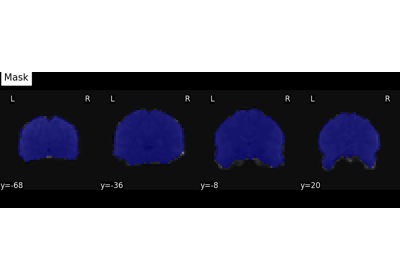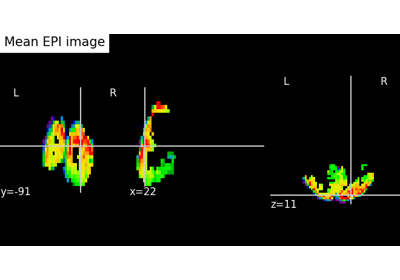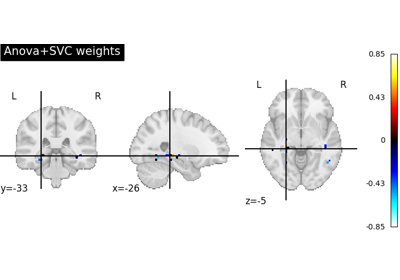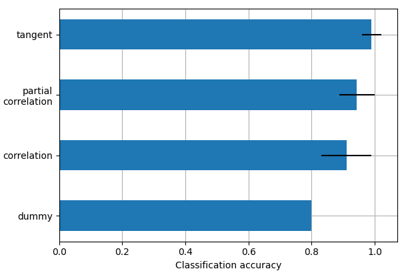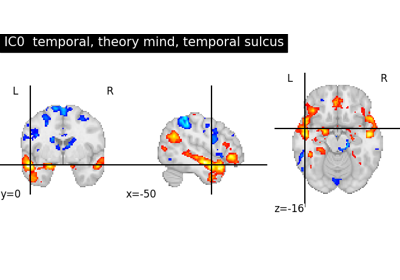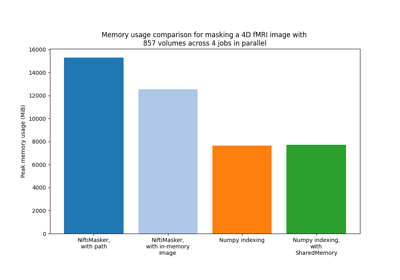Note
This page is a reference documentation. It only explains the class signature, and not how to use it. Please refer to the user guide for the big picture.
nilearn.maskers.BaseMasker¶
- class nilearn.maskers.BaseMasker[source]¶
Base class for NiftiMaskers.
- fit_transform(imgs, y=None, confounds=None, sample_mask=None, **fit_params)[source]¶
Fit to data, then transform it.
- Parameters:
- imgsNiimg-like object
- ynumpy array of shape [n_samples], default=None
Target values.
- confounds
numpy.ndarray,str,pathlib.Path,pandas.DataFrameorlistof confounds timeseries, default=None This parameter is passed to
nilearn.signal.clean. Please see the related documentation for details. shape: (number of scans, number of confounds)- sample_maskAny type compatible with numpy-array indexing, default=None
shape = (total number of scans - number of scans removed)for explicit index (for example,sample_mask=np.asarray([1, 2, 4])), orshape = (number of scans)for binary mask (for example,sample_mask=np.asarray([False, True, True, False, True])). Masks the images along the last dimension to perform scrubbing: for example to remove volumes with high motion and/or non-steady-state volumes. This parameter is passed tonilearn.signal.clean.Added in version 0.8.0.
- Returns:
- signals
numpy.ndarray Signal for each voxel. Output shape for :
3D images: (number of elements,) array
4D images: (number of scans, number of elements) array
- signals
- get_metadata_routing()¶
Get metadata routing of this object.
Please check User Guide on how the routing mechanism works.
- Returns:
- routingMetadataRequest
A
MetadataRequestencapsulating routing information.
- get_params(deep=True)¶
Get parameters for this estimator.
- Parameters:
- deepbool, default=True
If True, will return the parameters for this estimator and contained subobjects that are estimators.
- Returns:
- paramsdict
Parameter names mapped to their values.
- inverse_transform(X)[source]¶
Transform the data matrix back to an image in brain space.
This step only performs spatial unmasking, without inverting any additional processing performed by
transform, such as temporal filtering or smoothing.- Parameters:
- signals1D/2D
numpy.ndarray Extracted signal. If a 1D array is provided, then the shape should be (number of elements,). If a 2D array is provided, then the shape should be (number of scans, number of elements).
- signals1D/2D
- Returns:
- img
nibabel.nifti1.Nifti1Image Transformed image in brain space. Output shape for :
1D array : 3D
nibabel.nifti1.Nifti1Imagewill be returned.2D array : 4D
nibabel.nifti1.Nifti1Imagewill be returned.
- img
- set_fit_request(*, imgs='$UNCHANGED$')¶
Request metadata passed to the
fitmethod.Note that this method is only relevant if
enable_metadata_routing=True(seesklearn.set_config). Please see User Guide on how the routing mechanism works.The options for each parameter are:
True: metadata is requested, and passed tofitif provided. The request is ignored if metadata is not provided.False: metadata is not requested and the meta-estimator will not pass it tofit.None: metadata is not requested, and the meta-estimator will raise an error if the user provides it.str: metadata should be passed to the meta-estimator with this given alias instead of the original name.
The default (
sklearn.utils.metadata_routing.UNCHANGED) retains the existing request. This allows you to change the request for some parameters and not others.Added in version 1.3.
Note
This method is only relevant if this estimator is used as a sub-estimator of a meta-estimator, e.g. used inside a
Pipeline. Otherwise it has no effect.- Parameters:
- imgsstr, True, False, or None, default=sklearn.utils.metadata_routing.UNCHANGED
Metadata routing for
imgsparameter infit.
- Returns:
- selfobject
The updated object.
- set_params(**params)¶
Set the parameters of this estimator.
The method works on simple estimators as well as on nested objects (such as
Pipeline). The latter have parameters of the form<component>__<parameter>so that it’s possible to update each component of a nested object.- Parameters:
- **paramsdict
Estimator parameters.
- Returns:
- selfestimator instance
Estimator instance.
- set_transform_request(*, confounds='$UNCHANGED$', imgs='$UNCHANGED$', sample_mask='$UNCHANGED$')¶
Request metadata passed to the
transformmethod.Note that this method is only relevant if
enable_metadata_routing=True(seesklearn.set_config). Please see User Guide on how the routing mechanism works.The options for each parameter are:
True: metadata is requested, and passed totransformif provided. The request is ignored if metadata is not provided.False: metadata is not requested and the meta-estimator will not pass it totransform.None: metadata is not requested, and the meta-estimator will raise an error if the user provides it.str: metadata should be passed to the meta-estimator with this given alias instead of the original name.
The default (
sklearn.utils.metadata_routing.UNCHANGED) retains the existing request. This allows you to change the request for some parameters and not others.Added in version 1.3.
Note
This method is only relevant if this estimator is used as a sub-estimator of a meta-estimator, e.g. used inside a
Pipeline. Otherwise it has no effect.- Parameters:
- confoundsstr, True, False, or None, default=sklearn.utils.metadata_routing.UNCHANGED
Metadata routing for
confoundsparameter intransform.- imgsstr, True, False, or None, default=sklearn.utils.metadata_routing.UNCHANGED
Metadata routing for
imgsparameter intransform.- sample_maskstr, True, False, or None, default=sklearn.utils.metadata_routing.UNCHANGED
Metadata routing for
sample_maskparameter intransform.
- Returns:
- selfobject
The updated object.
- transform(imgs, confounds=None, sample_mask=None)[source]¶
Apply mask, spatial and temporal preprocessing.
- Parameters:
- imgs3D/4D Niimg-like object
See Input and output: neuroimaging data representation. Images to process. If a 3D niimg is provided, a 1D array is returned.
- confounds
numpy.ndarray,str,pathlib.Path,pandas.DataFrameorlistof confounds timeseries, default=None This parameter is passed to
nilearn.signal.clean. Please see the related documentation for details. shape: (number of scans, number of confounds)- sample_maskAny type compatible with numpy-array indexing, default=None
shape = (total number of scans - number of scans removed)for explicit index (for example,sample_mask=np.asarray([1, 2, 4])), orshape = (number of scans)for binary mask (for example,sample_mask=np.asarray([False, True, True, False, True])). Masks the images along the last dimension to perform scrubbing: for example to remove volumes with high motion and/or non-steady-state volumes. This parameter is passed tonilearn.signal.clean.Added in version 0.8.0.
- Returns:
- signals
numpy.ndarray Signal for each voxel. Output shape for :
3D images: (number of elements,) array
4D images: (number of scans, number of elements) array
- signals
- abstract transform_single_imgs(imgs, confounds=None, sample_mask=None, copy=True)[source]¶
Extract signals from a single niimg.
- Parameters:
- imgs3D/4D Niimg-like object
See Input and output: neuroimaging data representation. Images to process.
- confounds
numpy.ndarray,str,pathlib.Path,pandas.DataFrameorlistof confounds timeseries, default=None This parameter is passed to
nilearn.signal.clean. Please see the related documentation for details. shape: (number of scans, number of confounds)- sample_maskAny type compatible with numpy-array indexing, default=None
shape = (total number of scans - number of scans removed)for explicit index (for example,sample_mask=np.asarray([1, 2, 4])), orshape = (number of scans)for binary mask (for example,sample_mask=np.asarray([False, True, True, False, True])). Masks the images along the last dimension to perform scrubbing: for example to remove volumes with high motion and/or non-steady-state volumes. This parameter is passed tonilearn.signal.clean.Added in version 0.8.0.
- copy
bool, default=True Indicates whether a copy is returned or not.
- Returns:
- signals
numpy.ndarray Signal for each voxel. Output shape for :
3D images: (number of elements,) array
4D images: (number of scans, number of elements) array
- signals
Examples using nilearn.maskers.BaseMasker¶
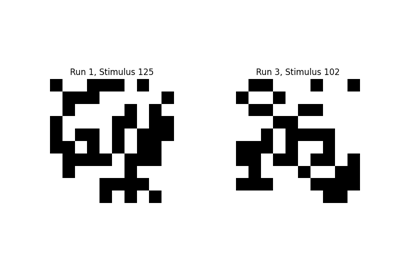
Encoding models for visual stimuli from Miyawaki et al. 2008
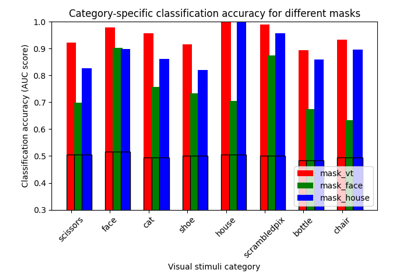
ROI-based decoding analysis in Haxby et al. dataset
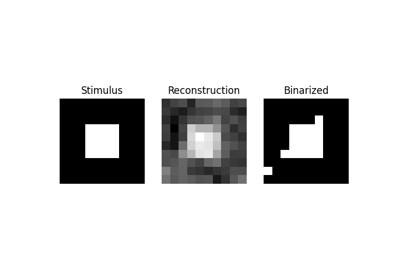
Reconstruction of visual stimuli from Miyawaki et al. 2008
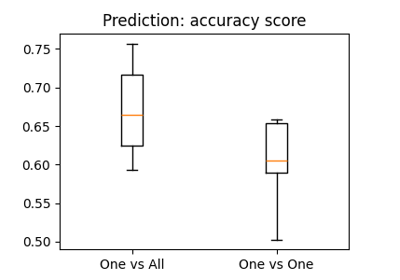
The haxby dataset: different multi-class strategies
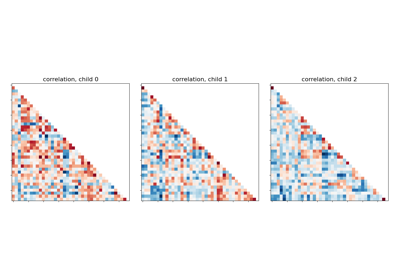
Classification of age groups using functional connectivity
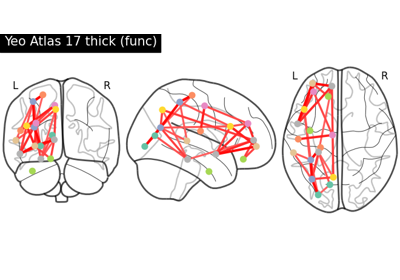
Comparing connectomes on different reference atlases
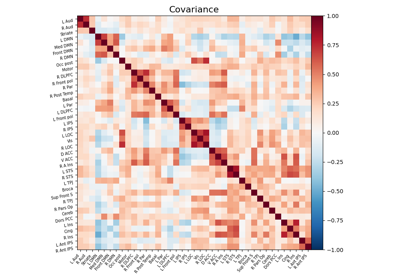
Computing a connectome with sparse inverse covariance
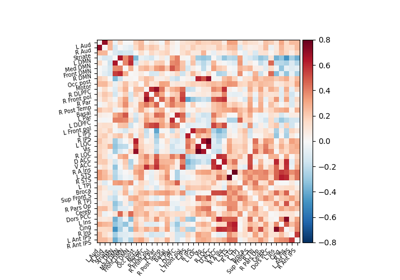
Extracting signals of a probabilistic atlas of functional regions
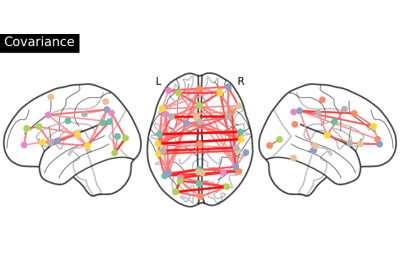
Group Sparse inverse covariance for multi-subject connectome
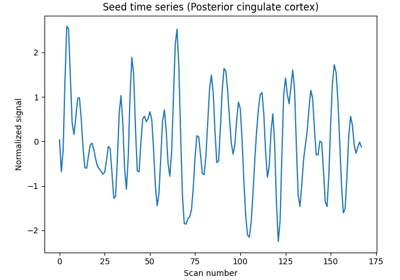
Producing single subject maps of seed-to-voxel correlation
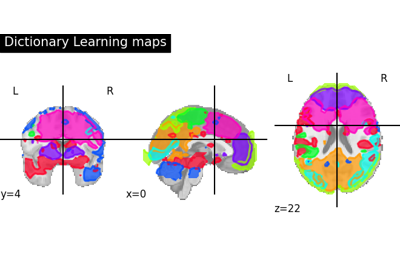
Regions extraction using dictionary learning and functional connectomes
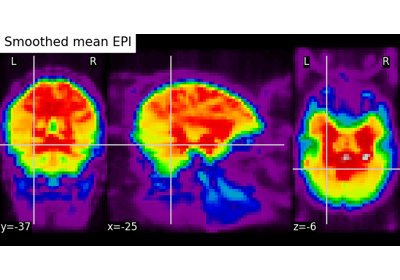
Computing a Region of Interest (ROI) mask manually
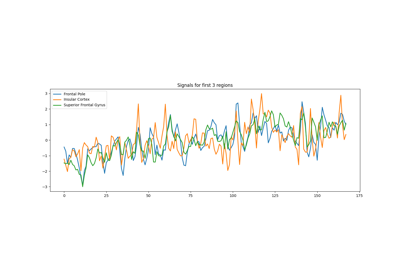
Extracting signals from brain regions using the NiftiLabelsMasker
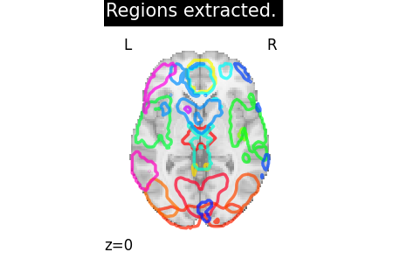
Regions Extraction of Default Mode Networks using Smith Atlas
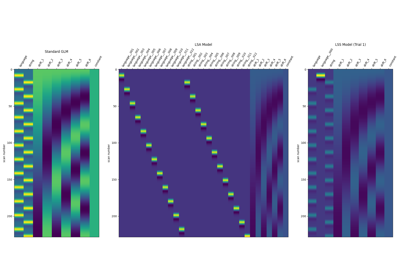
Beta-Series Modeling for Task-Based Functional Connectivity and Decoding
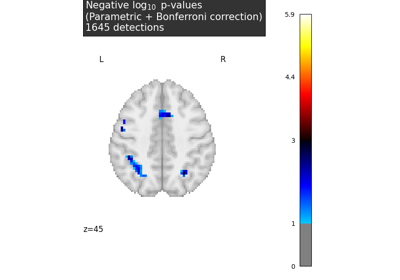
Massively univariate analysis of a calculation task from the Localizer dataset
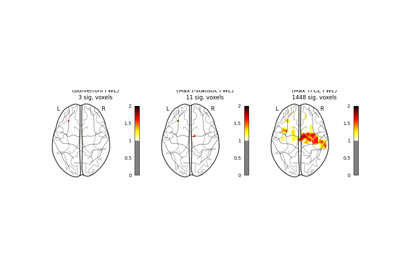
Massively univariate analysis of a motor task from the Localizer dataset
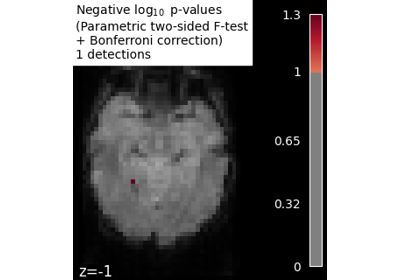
Massively univariate analysis of face vs house recognition
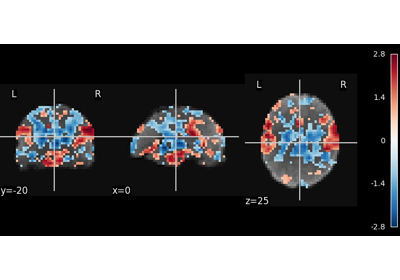
Multivariate decompositions: Independent component analysis of fMRI
